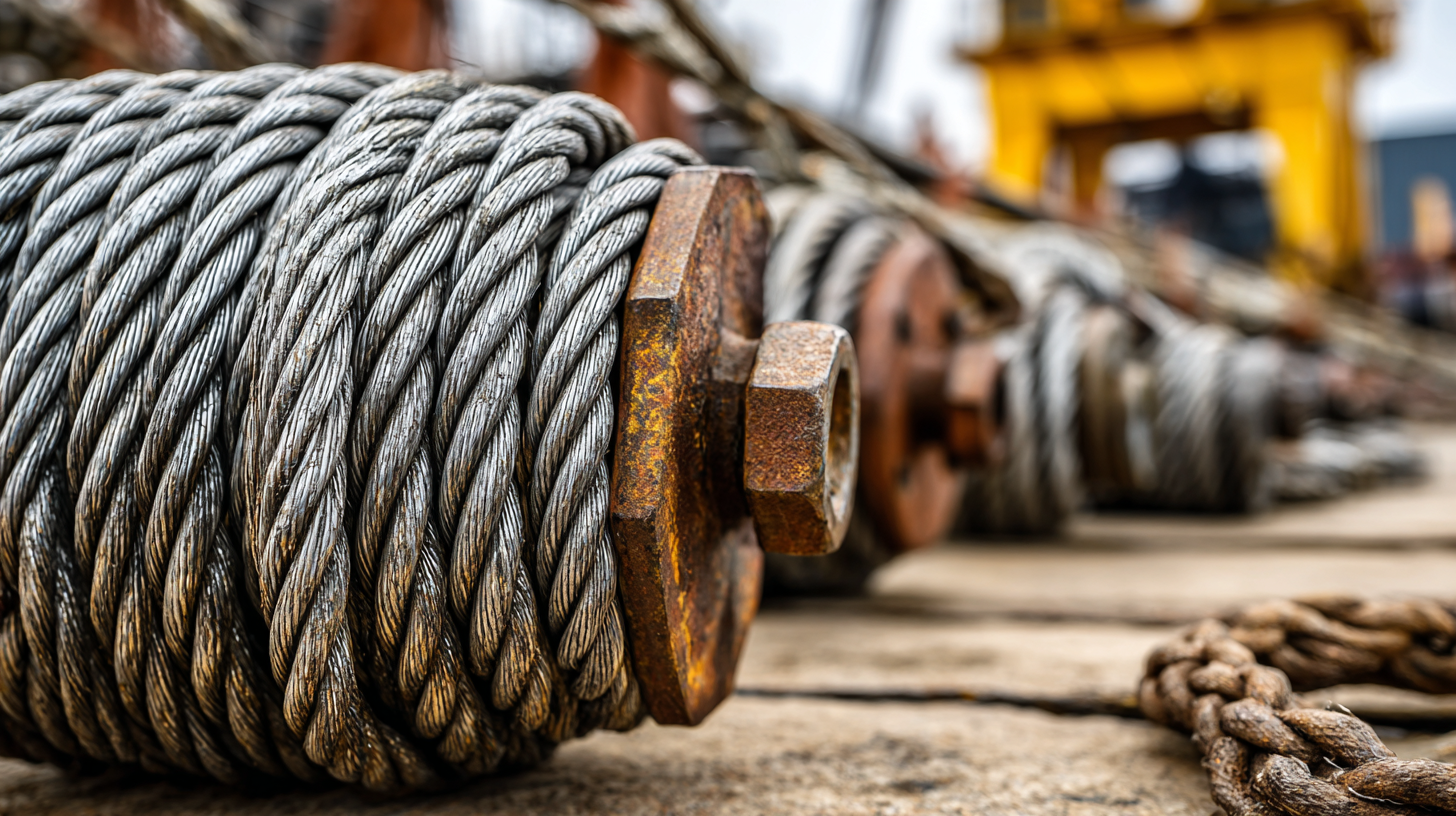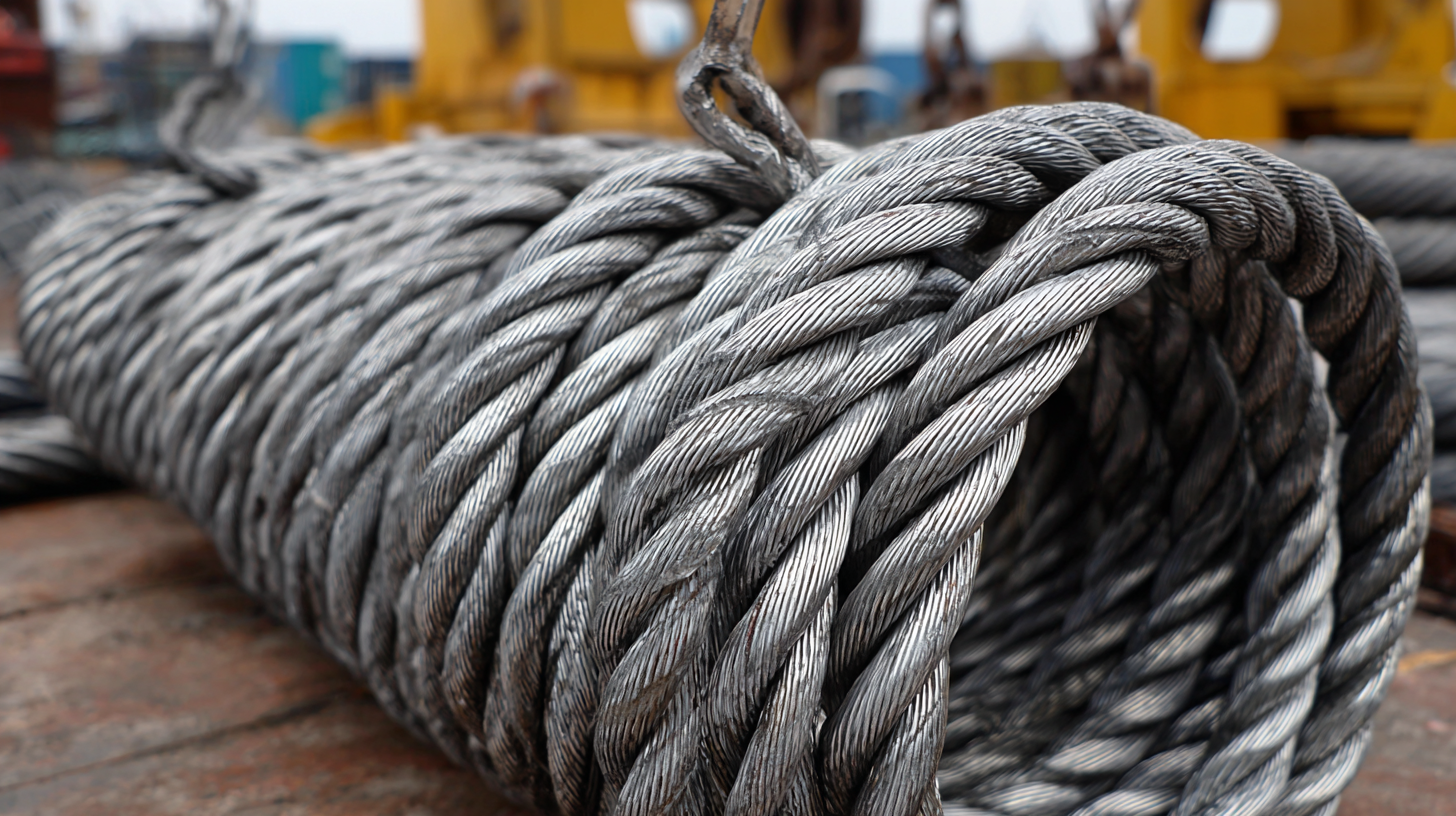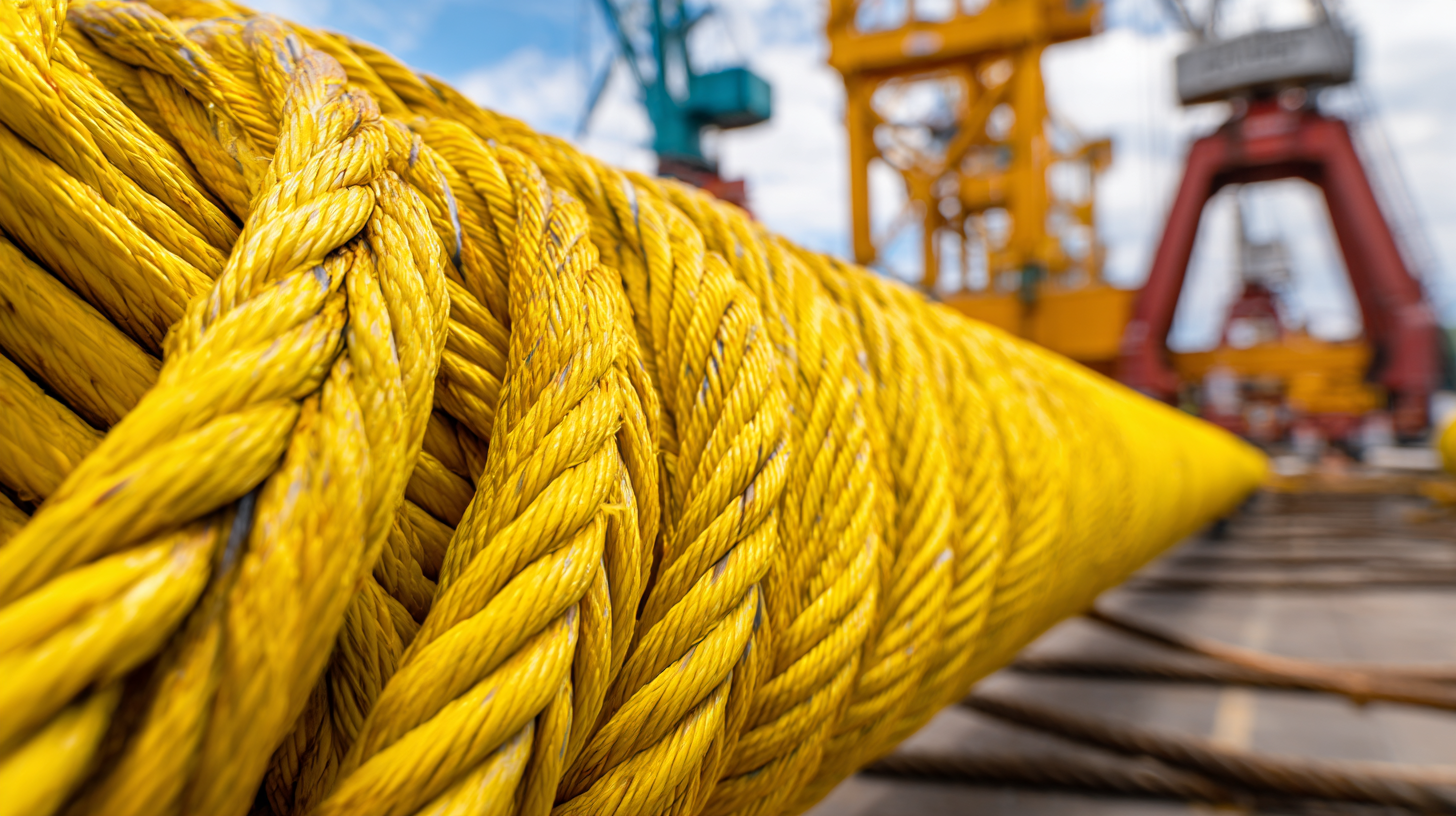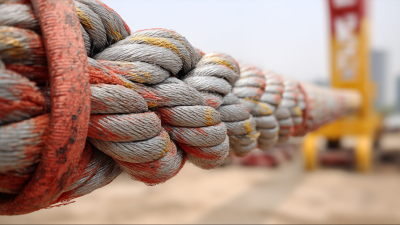Understanding the Strength and Longevity of Durable Crane Steel Rope: A Comprehensive Guide
In the realm of heavy lifting and transportation, the significance of Durable Crane Steel Rope cannot be overstated. As industries continue to evolve, the demand for robust and long-lasting lifting solutions has become paramount, especially in construction, manufacturing, and maritime operations. According to a report by Research and Markets, the global market for steel wire ropes is projected to reach USD 2.3 billion by 2025, highlighting the increasing reliance on high-performance materials.
Durable Crane Steel Rope, engineered to withstand extreme loads and challenging environmental conditions, plays a crucial role in enhancing operational safety and efficiency. With a tensile strength that can exceed 2000 MPa and resistance to wear and corrosion, this specialized rope not only ensures the integrity of lifting operations but also extends equipment lifespan.
Understanding the properties and benefits of Durable Crane Steel Rope is essential for professionals seeking to optimize their lifting solutions in a competitive market.
Key Factors Influencing the Strength of Crane Steel Rope
The strength of durable crane steel rope is influenced by several critical factors that ensure both safety and efficiency in lifting operations. One of the primary elements is the material composition of the rope, which often incorporates high-grade steel with specific properties designed to withstand immense loads and environmental conditions. Additionally, the construction of the rope, which may vary between different types such as stranded or braiding designs, plays a crucial role in its overall strength. Proper maintenance, including routine inspections and monitoring for signs of wear, is also essential in prolonging the life of the rope and preventing catastrophic failures.
In the context of mining operations, the degree of wear is a significant concern, as it directly impacts the safety of miners. Nondestructive testing methods incorporating advanced magnetic sensors are employed to evaluate the wear and integrity of mining wire ropes. This approach not only enhances worker safety but also aids in operational reliability. The findings suggest that ongoing assessment of wire ropes can prevent accidents and ensure that lifting equipment meets the necessary strength standards for demanding conditions.
Technological Innovations Enhancing Durability in Steel Ropes
Technological innovations in the manufacturing of durable crane steel ropes have significantly enhanced their longevity and performance. One of the key advancements lies in the development of advanced steel alloys, which offer superior tensile strength and resistance to wear and corrosion. According to a report by the Industrial Rope Association, modern steel ropes now boast up to 20% greater strength compared to those produced a decade ago. This improvement is partly due to enhanced manufacturing processes that ensure consistency in quality and performance, reducing the likelihood of failure in high-stress environments.
Moreover, the integration of smart technologies, such as real-time monitoring systems, has revolutionized the way crane operators manage their equipment. These systems can track parameters such as load weight, tension levels, and the condition of the rope itself. A study conducted by the American Association of Crane Operators indicates that cranes equipped with monitoring technology have experienced a 30% reduction in operational downtime, as potential issues can be identified and addressed before they lead to rope failure. This strategic use of technology not only extends the lifespan of the steel ropes but also significantly enhances workplace safety and operational efficiency.

Comparative Analysis: Steel Rope vs. Alternative Lifting Solutions
Steel ropes have long been a staple in the lifting accessories market, prized for their strength and durability. However, as the market evolves, alternatives such as synthetic ropes are gaining traction due to their weight advantages and resistance to environmental factors. A comparative analysis between steel ropes and these alternative lifting solutions reveals distinct benefits and drawbacks of each. While steel ropes offer exceptional load-bearing capacities and longevity, synthetic options can provide easier handling and reduced risks of injury from heavy lifting.
The lifting accessories market is projected to experience significant growth, expected to reach USD 973.8 million by 2035, up from USD 519.3 million in 2024. This increase underlines the rising demand for both traditional steel ropes and advanced lifting solutions that cater to various industrial needs. As companies continue to evaluate options, understanding the specific applications and limitations of steel ropes versus synthetic alternatives becomes crucial in making informed investment decisions in lifting technologies.
Maintenance Practices to Extend the Lifespan of Crane Ropes
When it comes to maintaining crane steel ropes, proper care significantly influences their strength and longevity. Regular inspections are essential to identify wear and damage early on. Operators should monitor for fraying, deformation, or corrosion that could compromise the rope's integrity. Creating a schedule for periodic evaluations helps ensure that any issues are caught before they escalate into significant failures.
**Tips:** Always clean the rope after use to remove debris and contaminants that can lead to rust and deterioration. A good practice is to lubricate the ropes with the manufacturer-recommended products to enhance their resistance to wear and corrosion.
Another vital aspect of maintenance involves adhering to the manufacturer’s weight limits and operational guidelines. Overloading can lead to premature failure. Training the personnel on proper operation procedures will not only protect the equipment but also ensure safety on the worksite. Implementing these maintenance practices will significantly extend the lifespan of crane ropes, ensuring reliable performance over time.
**Tips:** Maintain clear signage about load limits near crane operations and utilize weight monitoring systems to prevent overload situations effectively.
Understanding the Strength and Longevity of Durable Crane Steel Rope
| Parameter |
Description |
Optimal Level |
| Breaking Strength |
The maximum load that the rope can handle before breaking. |
80% of the rated capacity of the crane |
| Service Life |
The expected operational lifespan of the rope under normal conditions. |
5-10 years |
| Maintenance Frequency |
How often the rope should be inspected and maintained. |
Every 6 months |
| Lubrication Method |
The technique used to apply grease or oil to the rope. |
Spray lubrication |
| Corrosion Resistance |
The ability of the rope to withstand rust and degradation. |
High-grade coated steel |
Real-World Applications: Success Stories of Durable Crane Steel Rope
Durable crane steel ropes have become an indispensable asset across various industries, with real-world applications underscoring their effectiveness. For example, in construction, companies like Turner Construction have reported significant improvements in project safety and efficiency after adopting high-performance crane steel ropes. According to a recent report by the American Society of Mechanical Engineers (ASME), the use of durable steel ropes can increase load-handling capacity by up to 30%, reducing operational Downtime and maintenance costs.
In the mining sector, companies such as Newmont Goldcorp have successfully integrated durable crane steel ropes in their heavy lifting operations. This has not only enhanced their lifting capabilities but also extended the lifespan of equipment, with lifetimes reported to exceed 10,000 cycles. This aligns with data from the National Institute for Occupational Safety and Health (NIOSH), which indicates that equipment longevity directly correlates with improved safety outcomes on-site.
**Tips:** When selecting crane steel ropes, consider not only the tensile strength but also the rope's resistance to abrasion and corrosion. Regular maintenance and inspection can further prolong the lifespan of steel ropes, ensuring that they deliver performance and safety for extended periods. Additionally, opting for ropes that meet international quality standards can provide peace of mind and assurance of reliability in demanding work environments.


Home
About Us
Products
Stainless Steel Anchor Chain
Manganese Steel Lifting Chain Grade 80
Manganese Steel Lifting Chain
Hastelloy Round Bars
Hastelloy Sheet
Hastelloy steel pipe
Stainless steel wire rope
Stainless steel round
Stainless steel hexagonal rod
Stainless steel strip
Plastic coating wire rope
Stainless steel plate
Stainless steel angle
Stainless steel pipe
Stainless steel wire
Stainless steel flange
Stainless steel channel
Stainless steel flat steel
Industries
News
Service
Blog
Contact Us








